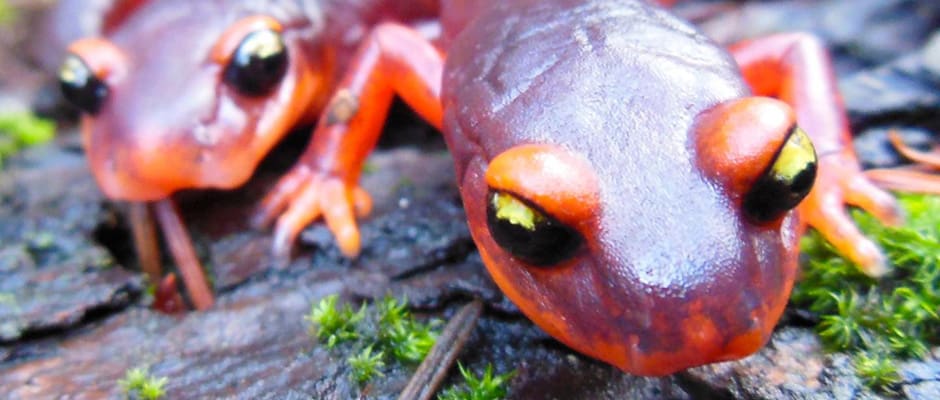Share this article
Scientists Call for Salamander Import Ban to Stop Pathogen
Scientists are calling for a ban on pet salamander imports in an attempt at stopping a new deadly fungal infection tearing through Asia and Europe from gaining a foothold in North America.
“Now we have a chance to actually do the right thing. We should really do it; there’s no excuse. There’s too much at risk,” said Vance Vredenburg, a professor of biology at San Francisco State University and the senior author of a new policy forum paper released in Science.
The Batrachochytrium salamandrivorans (Bsal) pathogen is originally from Asia and is related to the chytrid fungus that has been killing amphibians the world over for decades. Vredenburg said that the new Bsal fungus moved from Asia “on the backs of pet trade animals” into Europe. The fungus first appeared in Belgium and within a year has moved into Germany.
“It’s basically burning through European fire salamander (Salamandra salamandra) populations and causing mass die offs in the tens of thousands,” Vredenburg said. “It appears to be killing 100 percent of the animals it infects.”
The chytrid aquatic fungal pathogen, Batrachochytrium dendrobatidis (Bd), has been around for some time, but wasn’t described until almost 20 years after it began to cause problems for frogs. Chytrid can infect all amphibians, though it tends to hit frogs the hardest. The new fungus Bsal mainly affects salamanders.
“This fungus is much worse than the chytrid fungus, which is more like a lingering disease that affects the skin and puts stress on the salamander until it dies,” said David Wake, a co-author of the new paper, in a release. He is a professor at the University of California Berkeley and the director and founder of AmphibiaWeb, an online database of information on amphibian biology. “Bsal is an acute infection that just turns [salamanders] into little masses of slime in three to four days.”
According to their predication models, Vredenburg said that one disturbing things is that the main entry points in North America of pet trade salamanders which could be carrying Bsal from Asia or Europe are right in the most diverse salamander areas in the United States around Atlanta and San Francisco.
“It only takes a few of them being released by accident… people don’t realize what it could cause,”
He said laboratory tests have shown that North American species can be infected by Bsal, and he worries that it could lay waste to many of the continent’s endemic species, many of them which are already endangered or have small ranges. “We have a pretty good idea of what’s going to happen.”
He said that new laws wouldn’t have to be put in place — the U.S. Fish and Wildlife Service could implement the Lacey Act to stop salamander imports.
“They’ve been holding off because the disease isn’t here yet,” he said. But he argues that this is flawed thinking since the disease could put a definitive end to some species if it gain a foothold on salamander populations in North America. “If this stuff shows up it could be the end.”
Header Image:
The Ensatina salamander (Ensatina eschscholtzii), a lungless salamander common along the west coast of the United States, is one of hundreds of species of salamanders endemic to North America threatened by an emerging infectious pathogen.
Image Credit: Tiffany Yap








